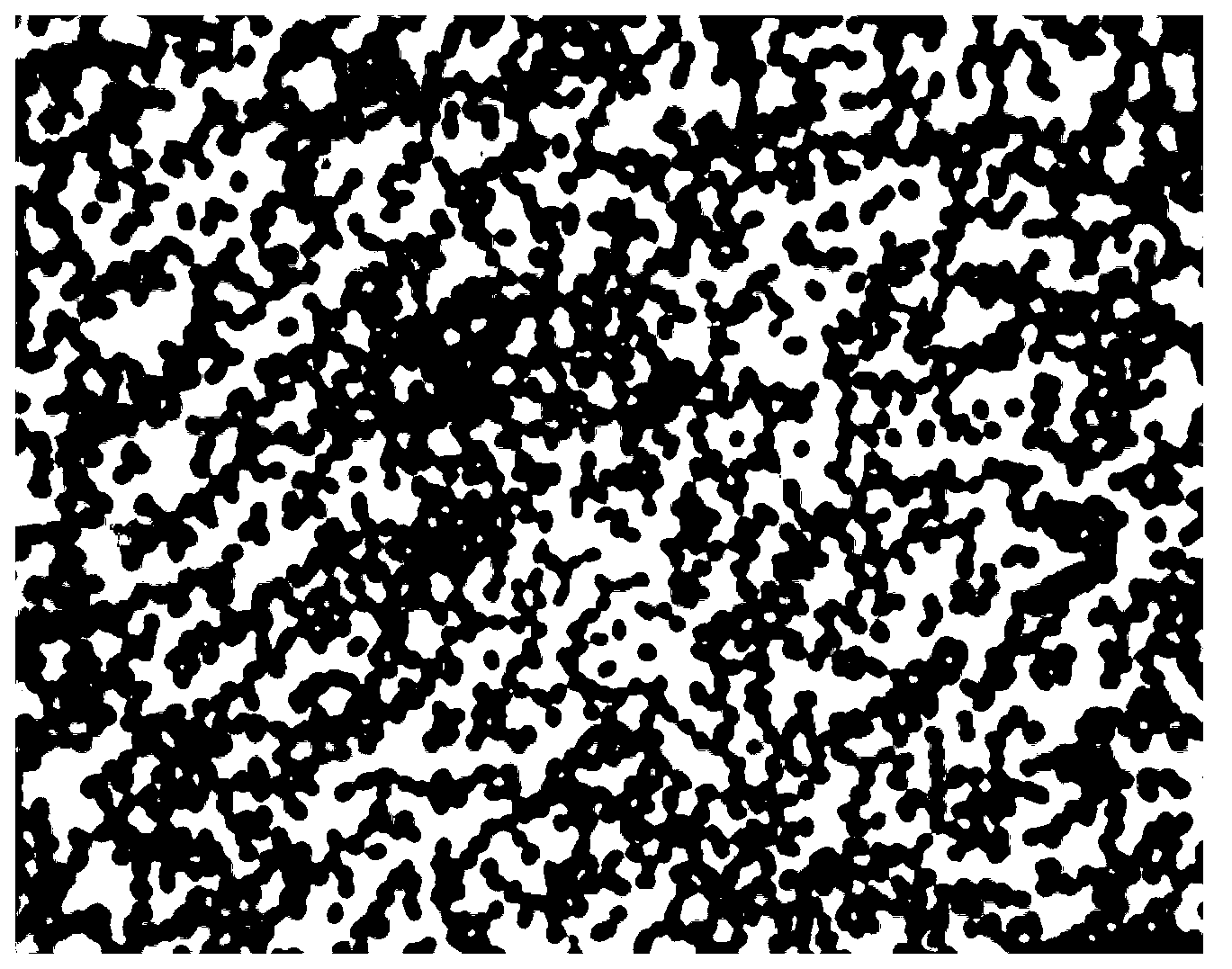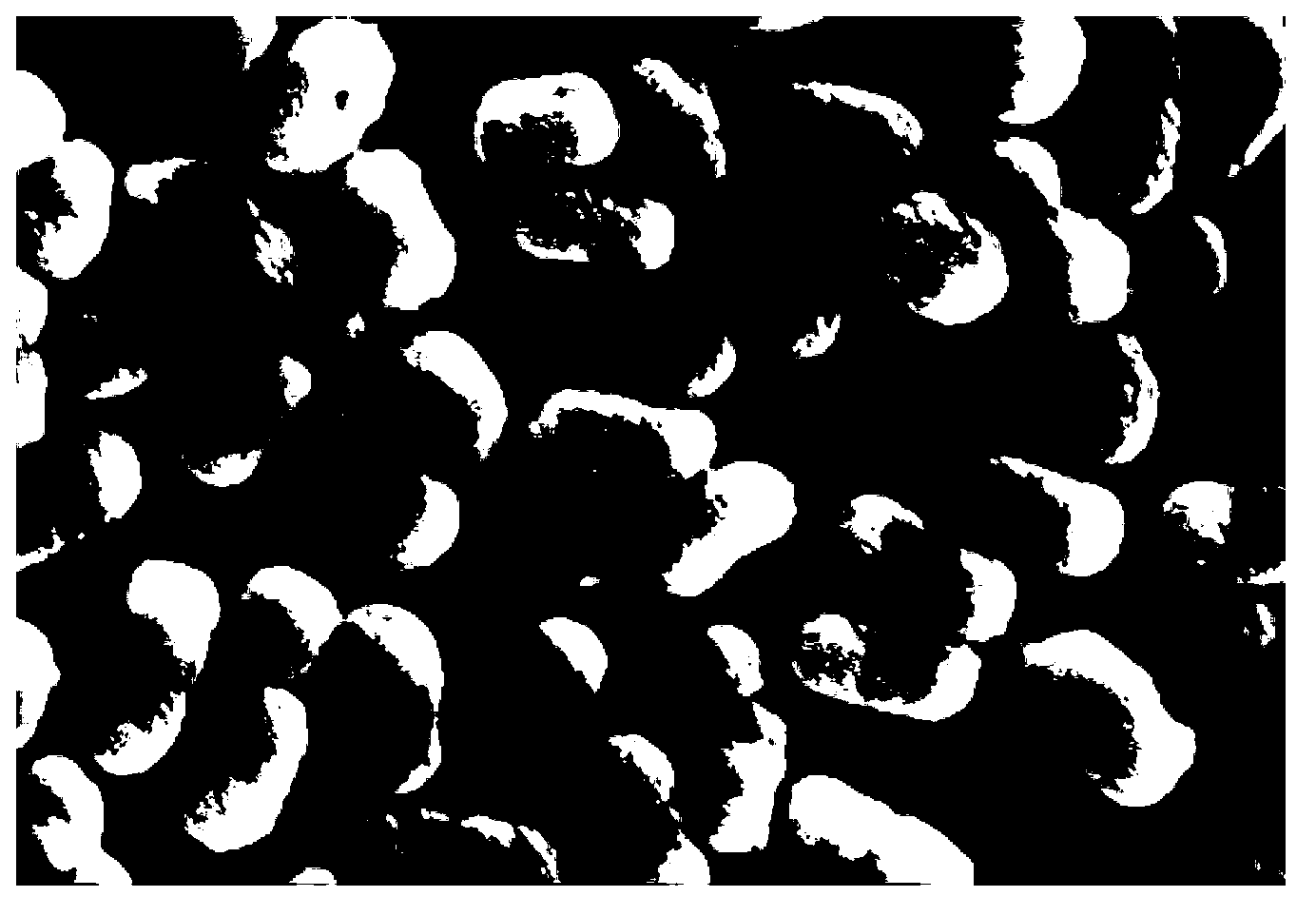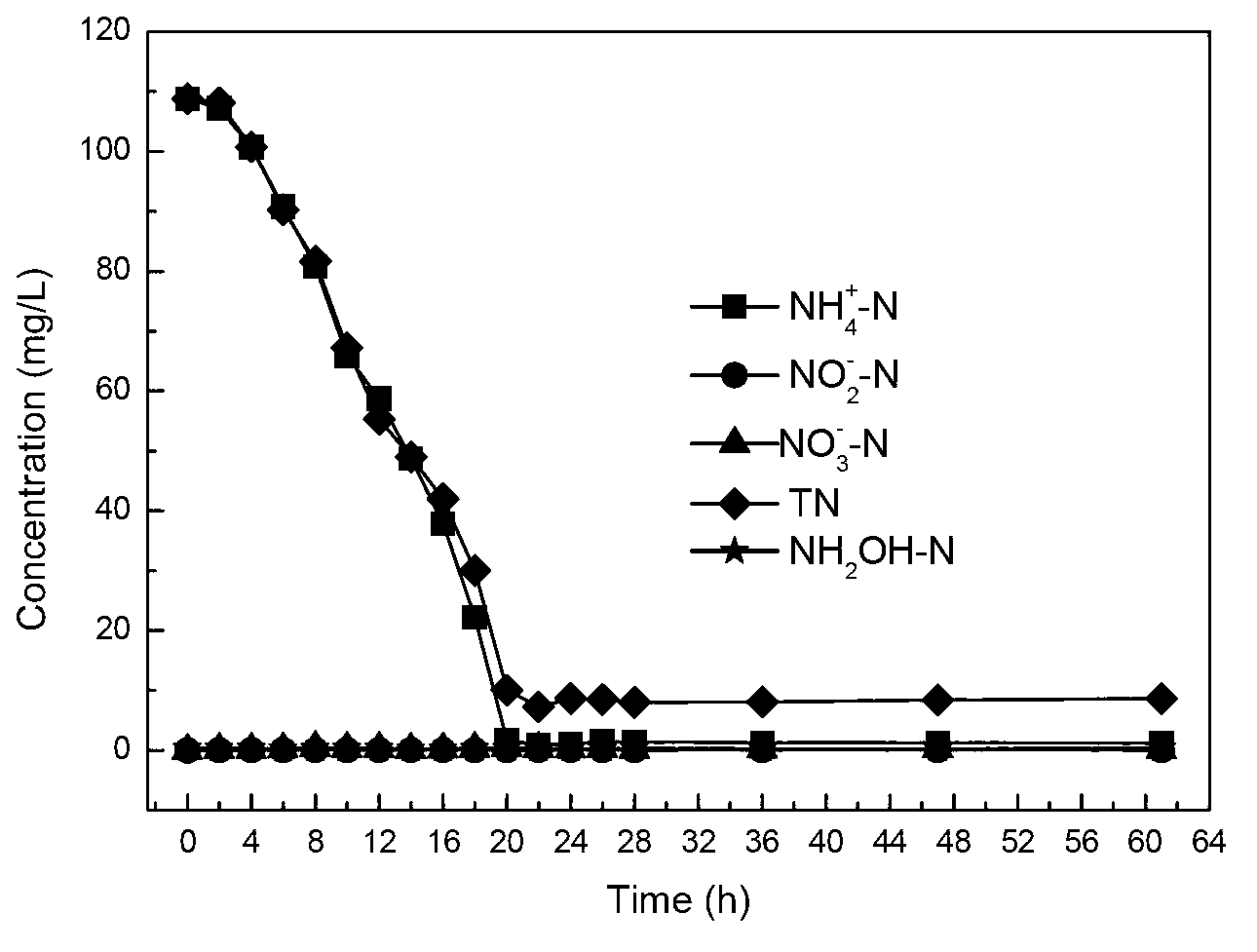Heterotrophic nitrifying and aerobic denitrifying bacterium and culture and application thereof
A technology of aerobic denitrification and heterotrophic nitrification, applied in the field of heterotrophic nitrification and aerobic denitrification bacteria, which can solve the problems of low dissolved oxygen requirements, increased treatment costs, and slow start-up of reactors
- Summary
- Abstract
- Description
- Claims
- Application Information
AI Technical Summary
Problems solved by technology
Method used
Image
Examples
Embodiment 1
[0069] Embodiment 1: the cultivation of bacterial strain of the present invention
[0070] (1) prepare heterotrophic nitrification medium, subpackage to 250mL Erlenmeyer flask, each bottle subpackage volume is 100mL, 121 ℃ of sterilization 20min; Described heterotrophic nitrification medium is (NH 4 ) 2 SO 4 0.47g, sodium citrate 4.9g, MgSO 4 ·7H 2 O 0.05g, K 2 HPO 4 0.2g, NaCl 0.12g, MnSO 4 4H 2 O 0.01g, FeSO4 0.01g, H 2 O 1000mL, pH 7.0;
[0071] (2) Inoculate the Acinetobacter sp.Y1 stored on the slant of the heterotrophic nitrification medium into a fresh heterotrophic nitrification medium, culture with shaking at 30°C and 120 rpm, and activate the culture for 18 hours for later use.
[0072] (3) The activated bacteria were inoculated into the heterotrophic nitrification medium according to the inoculum amount of 1%, and cultured with constant temperature shaking at 30° C. and 120 rpm.
Embodiment 2
[0073] Embodiment 2: the heterotrophic denitrification performance of bacterial strain of the present invention
[0074] Heterotrophic nitrification medium: (NH 4 ) 2 SO 4 0.47g, sodium citrate 4.9g, MgSO 4 ·7H 2 O 0.05g, K 2 HPO 4 0.2g, NaCl 0.12g, MnSO 4 4H 2 O 0.01g, FeSO4 0.01g, H 2 O 1000 mL, pH 7.0.
[0075] Use heterotrophic nitrification medium, inoculate the activated bacterial suspension at a ratio of 1% (see Example 1 for the method), shake and cultivate under the conditions of 30° C. and 120 rpm, and regularly take samples to detect ammonia nitrogen, hydroxylamine nitrogen, nitrite nitrogen, and nitrate nitrogen and total nitrogen. see results figure 2 . As can be seen from the figure, ammonia nitrogen and total nitrogen are consumed very quickly. In the heterotrophic nitrification medium whose initial ammonia nitrogen concentration is 108.78mg / L, the bacterial strain of the present invention can remove 98.6% of ammonia nitrogen and total nitrogen thro...
Embodiment 3
[0076] Embodiment 3: the aerobic denitrification performance of bacterial strain of the present invention
[0077] Nitrite medium: NaNO 2 0.49g, sodium citrate 6.86g, MgSO 4 ·7H 2 O 0.05g, K 2 HPO 4 0.2g, NaCl 0.12g, MnSO 4 4H 2 O 0.01g, FeSO 4 0.01g, H 2 O 1000mL, pH 7.0,.
[0078] Nitrate medium: NaNO 3 0.61g, sodium citrate 6.86g, MgSO 4 ·7H 2 O 0.05g, K 2 HPO 4 0.2g, NaCl 0.12g, MnSO 4 4H 2 O 0.01g, FeSO 4 0.01g, H 2 O 1000mL, pH 7.0,.
[0079] Use nitrite culture medium and nitrate culture medium, under the condition of initial nitrogen concentration 100mg / L, C / N ratio 20, 1% ratio inoculates the bacterium suspension after the activation (method sees embodiment 1), 30 ℃ , Shaking culture under the condition of 120rpm, take samples regularly to detect the absorbance value, nitrite nitrogen, nitrate nitrogen. see results image 3 and Figure 4 .
[0080] From the data in the figure, it can be seen that the strain Y1 can effectively remove nitrogen when...
PUM
 Login to View More
Login to View More Abstract
Description
Claims
Application Information
 Login to View More
Login to View More - R&D
- Intellectual Property
- Life Sciences
- Materials
- Tech Scout
- Unparalleled Data Quality
- Higher Quality Content
- 60% Fewer Hallucinations
Browse by: Latest US Patents, China's latest patents, Technical Efficacy Thesaurus, Application Domain, Technology Topic, Popular Technical Reports.
© 2025 PatSnap. All rights reserved.Legal|Privacy policy|Modern Slavery Act Transparency Statement|Sitemap|About US| Contact US: help@patsnap.com



